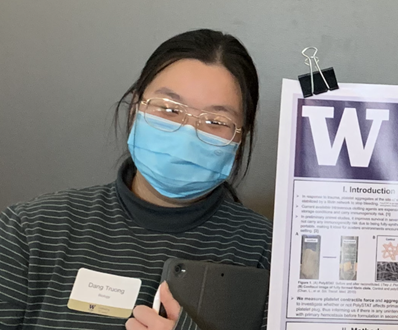Mary Gates Research Scholarships – 2023 Winter Awards

Mary Gates Research Scholarships are competitive scholarships intended to enhance the educational experiences of undergraduate students at the University of Washington while they are engaged in research guided by faculty. With research scholarships, students may be able to focus more attention and time, deepening their inquiry into a discipline or project with a reduced financial burden.
Students receive research scholarships to pursue research in a variety of disciplines. Applications are accepted twice per year – once in Autumn Quarter and once in Winter Quarter. The scholarships are up to $5,000 and disburse in installments of $2,500 each over two quarters. Graduating seniors may request to receive a one-quarter award totaling $2,500. Learn about Mary Gates Awards and apply.
Congratulations to the Bothell Students who received Mary Gates Research Scholarships for the Winter 2023 quarter.
James I Oelund
Electrical Engineering, Mentor: Sunwoong Kim, Division of Engineering & Mathematics
Dang Troung

Biology, Mentor: Nathan Sniadecki, Mechanical Engineering
Project Title: Evaluating the Effect of VWF:ADAMTS13 Ratio on Embolization and Thrombotic Risk Using a Microfluidic Device
Abstract: At the site of vascular injury, platelets aggregate, activate, and exert contractile force to form a strong, stable platelet-rich plug. The balance of the blood glycoprotein von Willebrand Factor (VWF) and its protease ADAMTS13 are vital for regulating hemostasis. Under conditions of high shear flow, VWF initially arrests platelets at the wound site, while ADAMTS13 regulates VWF’s activity by cleaving VWF into smaller components, which ensures a thrombus does not occlude a vessel. Clinically, an imbalance of VWF and ADAMTS13 is correlated with an increased risk for thrombosis and/or bleeding. A high VWF concentration relative to ADAMTS13 activity increases platelet adhesion and promotes large thrombi to form. While it is known how the concentration of these proteins contributes to the size of a platelet-plug, it is unknown how they impact stability and contractile force. If platelet-plug stability and contractile force are unable to overcome larger drag forces due to the size of the plug, thrombi are likely to embolize and travel downstream, which puts a patient at high risk for a stroke or heart attack. My approach is to use a novel microfluidic device that measures the force of platelet-plugs formed under shear flow, in parallel with a protocol I developed to fluorescently label a small percentage of platelets and track their movement. This is research in progress, but I hypothesize that a high VWF:ADAMTS13 ratio will have lower platelet- plug stability and contractile force. The study will explore the mechanical mechanisms by which a high VWF:ADAMTS13 ratio is indicative of thrombosis, leading to future diagnostic and therapeutic techniques.
